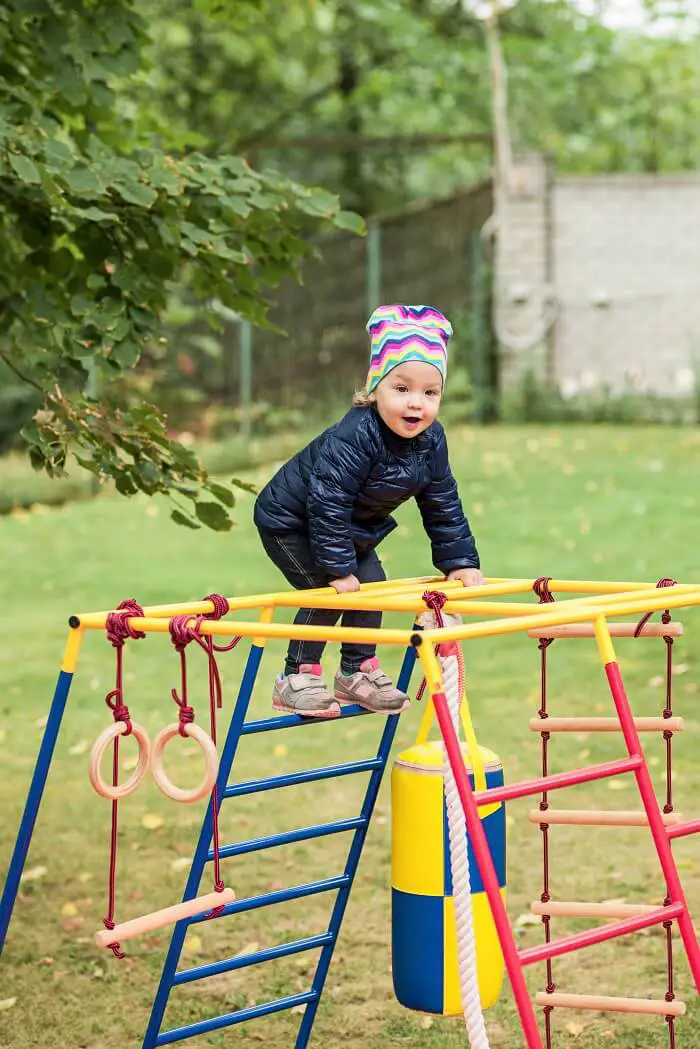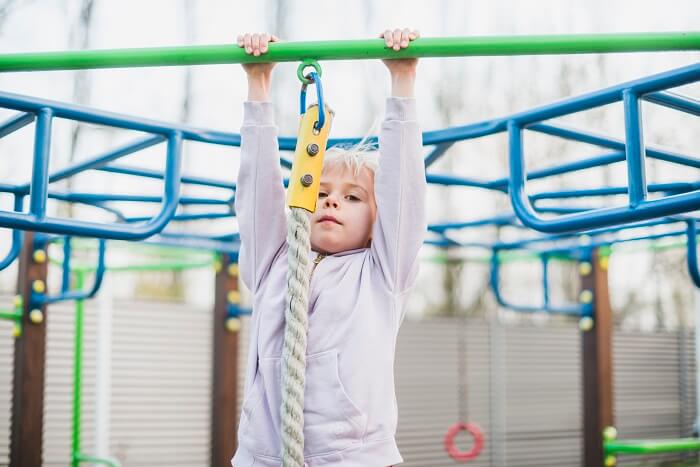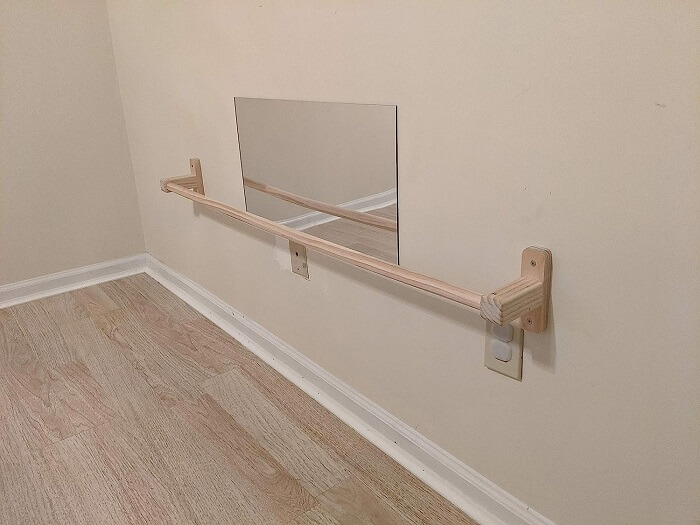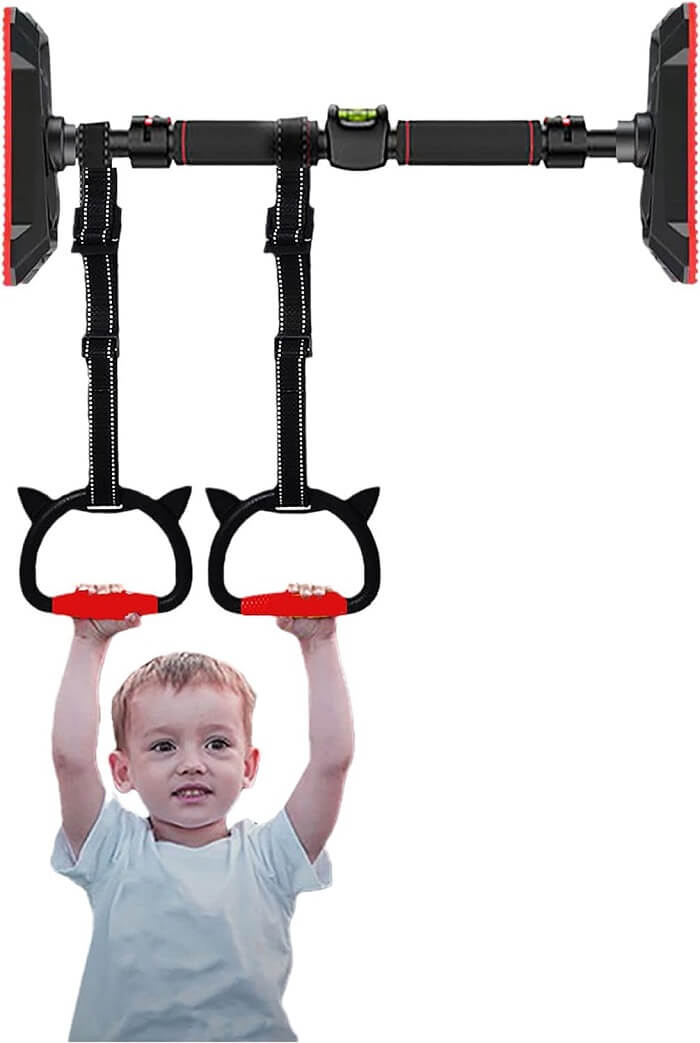Exploring the Benefits of Baby Pull Up Bars: A Comprehensive Guide
I have a 9 month old baby, and he is always on the move. Whether it's crawling, standing, or pulling up on things, my son has a lot of energy and needs to be kept busy! One way we've found to keep him entertained is with this simple DIY baby pull up bar. It's sturdy, easy to install, and can be used by children of any age!
Baby pull up bars have emerged as a unique and innovative tool for enhancing the physical development of infants. These miniaturized versions of the equipment commonly used in fitness centers are designed to cater specifically to the needs of babies. They offer a safe and controlled environment for infants to engage in activities that promote motor skill development, muscle strengthening, and cognitive growth.
Understanding The Concept and Purpose
The concept behind baby pull up bars is to provide babies with an opportunity to engage in safe and supervised physical activities that mimic the actions of pulling themselves up. This action, often observed when babies start trying to stand or take their first steps, is a crucial developmental milestone. Pull up bars are designed to support this natural inclination in a controlled setting, encouraging babies to practice and gradually build their strength and coordination.

Importance of Physical Activity for Infants
Physical activity plays a pivotal role in the overall growth and development of infants. As babies grow, their muscles, bones, and cognitive functions undergo rapid changes. Engaging in appropriate physical activities from an early age not only strengthens muscles and bones but also enhances motor skills and cognitive abilities. Baby pull up bars provide a structured way for infants to engage in physical play, contributing to their holistic development.
Developmental Milestones and Baby Pull Up Bars
Motor Skill Development in Babies
Motor skill development is a critical aspect of an infant's growth journey. From the moment they are born, babies begin to explore and interact with their surroundings, gradually refining their physical abilities. Motor skills can be broadly categorized into two types: gross motor skills and fine motor skills.
- Gross Motor Skills: These involve the use of larger muscle groups to perform activities like crawling, rolling over, sitting up, and eventually standing and walking. Gross motor skills are fundamental for mobility and overall physical coordination.
- Fine Motor Skills: These involve the coordination of smaller muscle groups, such as those used for grasping objects, picking up small items, and eventually self-feeding. Fine motor skills are essential for tasks that require precision and dexterity.
How Pull Up Bars Contribute to Reaching Milestones
Baby pull up bars provide a unique platform that supports and nurtures an infant's motor skill development in several ways:
- Strengthening Core Muscles: When babies grasp the pull-up bar and attempt to pull themselves up, they engage their core muscles. This action helps in building the strength required for sitting, standing, and walking.
- Improving Grip Strength: Holding onto the pull-up bar requires a firm grip. As babies continue to hold and manipulate the bar, their grip strength improves, which is beneficial for various fine motor activities.
- Enhancing Balance and Coordination: Pull-up bars encourage babies to shift their weight, maintain balance, and coordinate their movements. These actions contribute to the development of balance and overall body coordination.
- Promoting Cognitive Growth: The act of pulling up involves understanding cause and effect. Babies learn that by gripping the bar and using their muscles, they can achieve an upright position. This cognitive connection enhances their understanding of their own capabilities.
- Fostering Confidence: Successfully pulling up or even attempting to do so fosters a sense of achievement and boosts a baby's self-confidence. This accomplishment encourages them to explore more physical activities.
- Preparation for Standing and Walking: Pull-up bars simulate the motions involved in standing and taking steps. Regular practice can prepare babies for these significant milestones in their physical development.
Types of Baby Pull Up Bars
Baby pull up bars come in various types, each offering unique features and benefits to cater to different preferences and living situations. Let's explore the three main types: freestanding pull-up bars, doorway-mounted pull-up bars, and DIY baby pull up bar options with safety considerations.
Freestanding Pull Up Bars
Freestanding pull up bars are standalone structures designed specifically for babies. They typically consist of a sturdy base, a horizontal bar at an appropriate height, and additional attachments or toys to engage babies during play.
Advantages:
Portability: Freestanding bars can be moved around the house, allowing parents to create play areas in different rooms.
Stability: The broad base ensures stability, reducing the risk of tipping over.
Interactive Features: Many freestanding pull-up bars come with attached toys, mirrors, or interactive panels to engage babies during playtime.
Considerations:
Space Requirement: They may require more floor space compared to other options.
Storage: While some models are foldable, storage might still be a consideration.
Doorway-Mounted Pull-Up Bars
Doorway-mounted pull-up bars are designed to be attached to a door frame. They usually consist of a horizontal bar that fits securely in the doorway and can be easily removed when not in use.
Advantages:
Space Efficiency: Doorway-mounted bars don't take up floor space and can be set up in doorways or hallways.
Convenience: Easy to install and remove, making them a practical choice for homes with limited space.
Adjustable Height: Some models allow for height adjustments as the baby grows.
Considerations:
Installation: Proper installation is essential for safety. The door frame should be sturdy enough to support the bar.
Limited Mobility: They are fixed in one location and cannot be moved around like freestanding bars.
DIY Baby Pull Up bar Options and Safety Considerations
DIY baby pull up bars can be created using household items like PVC pipes, ropes, and secure attachments. Safety is paramount when opting for DIY solutions.
Advantages:
Cost-Effective: DIY options can be more budget-friendly.
Customization: Parents can tailor the bar to their preferences and available materials.
Considerations:
Safety: DIY bars must be carefully designed and securely attached to prevent accidents.
Materials: Using safe and non-toxic materials is crucial.
Expertise: Some DIY projects might require woodworking or crafting skills.
Before choosing a baby pull up bar diy type, assess your living space, safety considerations, and your baby's comfort. Regardless of the type you choose, providing a safe and engaging environment for your baby's physical activities is the top priority. In the following sections, we will explore safety measures and guidelines for using baby pull up bars effectively.
Safety Measures and Guidelines
Ensuring the safety of your baby while using a pull-up bar is paramount. Follow these essential safety measures and guidelines to provide a secure environment for your baby's physical activities.
Choosing the Right Pull-Up Bar for Your Baby's Age
- Age-Appropriate Design: Select a pull-up bar that is specifically designed for your baby's age group. Manufacturers often provide age recommendations to ensure the equipment's suitability.
- Adjustability: If possible, opt for a pull-up bar with adjustable height settings. This allows you to customize the bar as your baby grows.
Installing the Pull-Up Bar Securely
- Read the Instructions: Carefully read and follow the manufacturer's installation instructions. Each type of pull up bar may have specific installation requirements.
- Sturdy Support: For freestanding pull up bars, ensure that the base is stable and placed on a flat surface. For doorway-mounted bars, ensure the door frame can support the weight and force exerted on the bar.
- Check for Stability: Before placing your baby on the pull up bar, give it a gentle shake to check for any wobbling or instability.
- Supervision and Precautions
- Constant Supervision: Always supervise your baby while they are using the pull up bar. Babies can quickly shift positions or lose balance, so being close by is essential.
- Use Safety Straps: Some freestanding pull up bars come with safety straps or harnesses to secure the baby while they play. Ensure these are properly adjusted and fastened.
- Comfortable Attire: Dress your baby in comfortable clothing that doesn't restrict movement. Avoid anything with strings or cords that could pose a choking hazard.
- Limit Usage Time: Babies should not spend excessive time on the pull up bar. Limit sessions to short durations to prevent overexertion.
- Monitor Baby's Reaction: Pay attention to your baby's cues. If they seem uncomfortable, fussy, or fatigued, it's time to take a break.
- Consult a Pediatrician: If you have any concerns about your baby's physical abilities or using a pull up bar, consult a pediatrician before introducing the equipment.
By following these safety measures and guidelines, you can create a safe and enjoyable environment for your baby to engage with the pull up bar. In the upcoming sections, we will explore the numerous physical benefits that come with using a baby pull up bar and how it contributes to your baby's developmental journey.
Materials for DIY Baby Pull Up Bar
- Wooden dowels. You can buy them at your local hardware store or on Amazon, but they need to be the right size and length for your baby's height. I bought some 3/4-inch wooden dowels that were about 12 inches long for my 3-month-old baby girl, who is now much taller than that! So make sure you measure carefully before buying anything.
- Wooden boards (or any flat surface). This will be the base of your DIY baby pull up bar so that it doesn't wobble around when you're trying to hang from it!
- Screws, nails (to secure into wall), tools like a drill and hammer if you need them
Step-by-step Installation Guide
Assembling Freestanding Pull Up Bars
Unboxing: Carefully unpack all components and lay them out for easy access.
Base Assembly: Assemble the base according to the manufacturer's instructions. Ensure its stable and level on the floor.
Bar Attachment: Attach the horizontal bar securely to the designated connectors on the base.
Toy Attachments: If applicable, add any interactive toys or panels as per the instructions.
Height Adjustment: Adjust the bar's height if it's adjustable, considering your baby's reach.
Safety Check: Give the assembled pull-up bar a gentle shake to check for stability.
Installing Doorway-Mounted Pull Up Bars
Choosing the Doorway: Select a doorway with a sturdy frame. Avoid doors with glass panels.
Measurements: Measure the doorway's width to ensure compatibility with the pull-up bar.
Bar Attachment: Securely fix the bar's mounts onto the door frame, following the provided guidelines.
Height Adjustment: Adjust the bar's height to match your baby's reach.
Stability Check: Ensure the bar is securely attached and can support weight.
Test: Gently pull the bar to ensure it's firmly in place before letting your baby use it.
Always refer to the manufacturer's specific instructions during installation. Proper assembly guarantees your baby's safety during playtime. The upcoming sections will explore safety checks and maintenance for pull-up bars.
FAQs About Baby Pull Up Bars
Q. What Age Is Suitable for Introducing Pull Up Bars?
The appropriate age for introducing pull-up bars varies. Generally, when babies show interest in pulling themselves up or are on the verge of standing, pull-up bars can be considered. Consult your pediatrician for personalized advice based on your baby's development.
Q. Can Pull Up Bars Hinder Natural Development?
When used safely and appropriately, pull-up bars do not hinder natural development. They offer controlled opportunities for babies to engage in physical play that supports muscle strength, coordination, and cognitive growth. However, excessive or improper use could potentially cause strain, so it's crucial to follow safety guidelines and supervise baby's interactions.
Conclusion
This baby pull up bar is a great way to get your child ready for the real thing. They can use it to practice their pull ups and build muscle strength before moving on to doing them on regular bars at home or in the gym. It's also great if you want your little one to work on other exercises like pushups and crunches too!




